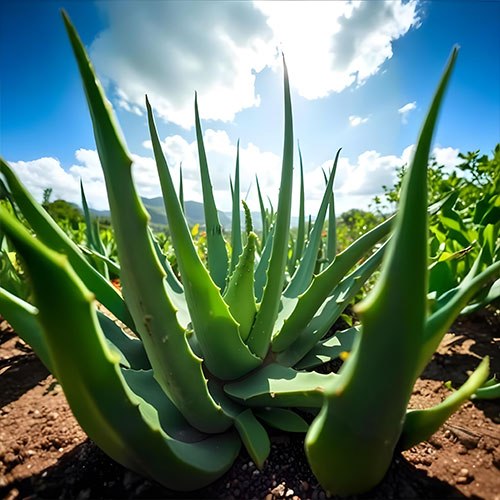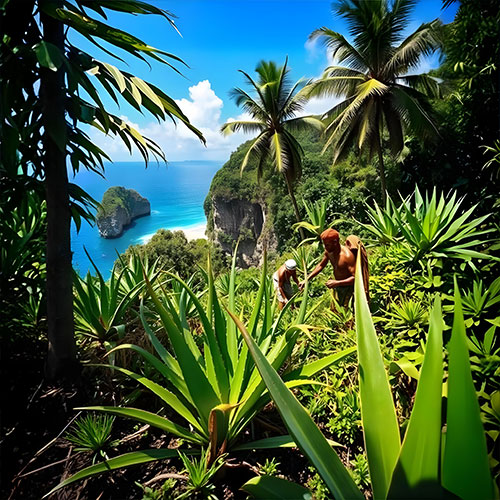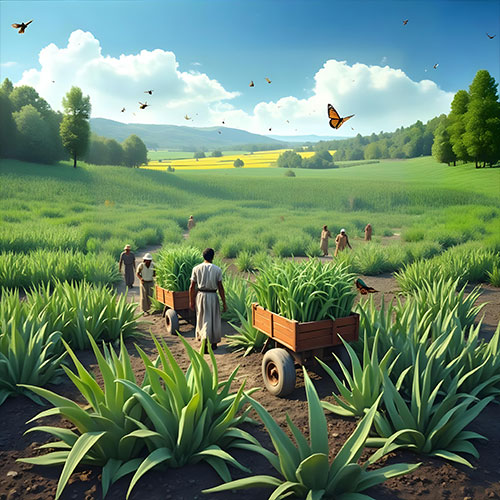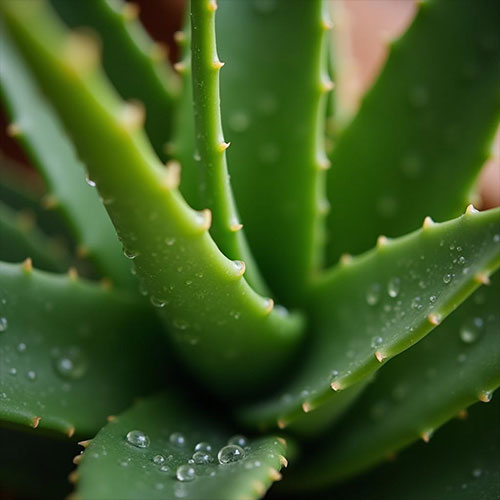






Aloe vera, a plant known worldwide for its medicinal properties, has a fascinating history that intertwines with the tropical landscapes of the Caribbean. From its introduction to the Americas to its enduring cultural and agricultural significance, the story of aloe vera in the Caribbean is one of adaptation, resilience, and healing.
Aloe vera's journey to the Americas began with Christopher Columbus, who is credited with introducing the plant to the Caribbean Islands. Recognized for its versatility and hardiness, aloe vera quickly adapted to the region's sunny, tropical climate. The Caribbean provided the perfect conditions for the plant to thrive, with its fertile soil and abundant sunlight ensuring rapid growth. This marked the beginning of aloe vera's Caribbean chapter, where it would soon become an integral part of the local environment and culture.
The lush landscapes of the Caribbean proved to be an ideal home for aloe vera. The plant’s ability to endure harsh conditions made it a natural fit for the islands. Fields of aloe vera began to flourish, their thick, green leaves shimmering with dew under the morning sun. This resilience ensured that aloe vera could not only survive but also thrive alongside other native flora, becoming a staple in the Caribbean's biodiversity.
For generations, the islanders embraced aloe vera for its natural healing properties. Its gel, rich in vitamins, enzymes, and anti-inflammatory compounds, became a trusted remedy for treating wounds, burns, and skin irritations. Whether soothing sunburns or aiding recovery from minor injuries, aloe vera became a household staple in traditional medicine. Passed down through oral traditions, these remedies cemented the plant's reputation as the “plant of immortality.”
Aloe vera's impact extended beyond medicine to agriculture and local ecosystems. Farmers often relied on its gel to soothe sunburnt skin after long hours under the tropical sun. Meanwhile, the plant's presence in fields alongside other crops supported pollinators like bees and butterflies, contributing to ecological balance. Its cultivation provided a symbol of resilience and sustenance, reflecting the plant's adaptability and usefulness.
Today, aloe vera remains deeply embedded in Caribbean culture. Traditional remedies using aloe are still practiced, and its gel is a prized ingredient in modern wellness and beauty products. Spas across the Caribbean incorporate aloe vera into treatments, showcasing its timeless appeal and effectiveness. Large-scale aloe vera plantations continue to thrive, sustaining local economies and preserving the plant’s legacy.
The story of aloe vera in the Caribbean is one of enduring significance. From its initial introduction to its modern applications, the plant has become a symbol of healing, resilience, and vitality. As a bridge between traditional knowledge and contemporary practices, aloe vera’s journey continues to inspire, connecting past generations to the future of wellness.
Whether in a tropical field or a luxurious spa, aloe vera's Caribbean legacy reminds us of the power of nature to heal and rejuvenate.
Coming Up Next: The Journey to Mexico!
Discover how aloe vera crossed oceans and found its way to the vibrant landscapes of Mexico. In this fascinating chapter, we’ll unveil how this miraculous plant adapted to a new home, becoming a staple in Mexican traditions and skincare rituals. Don’t miss the story of aloe vera’s remarkable arrival!